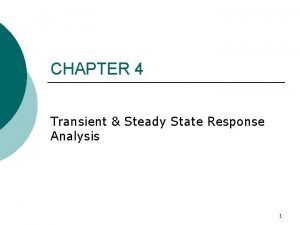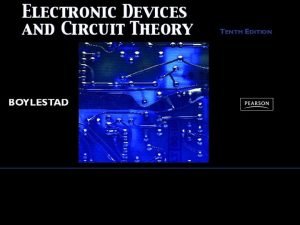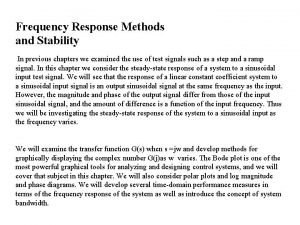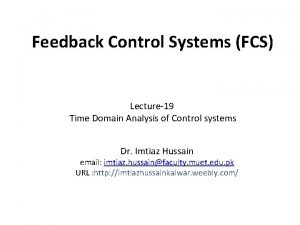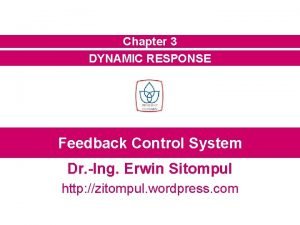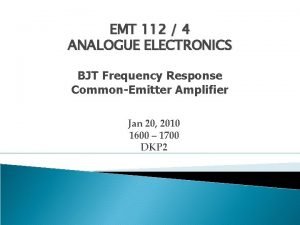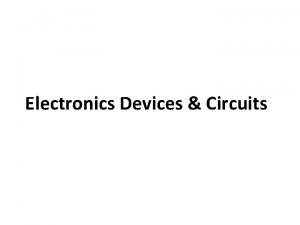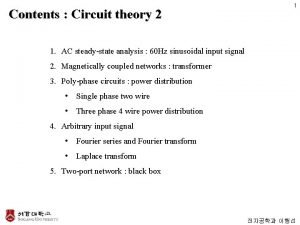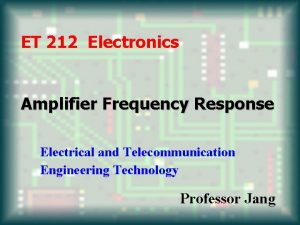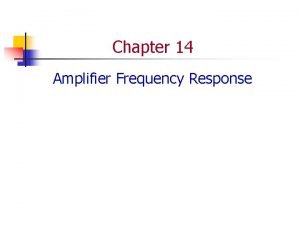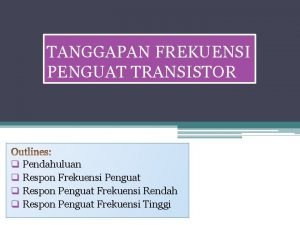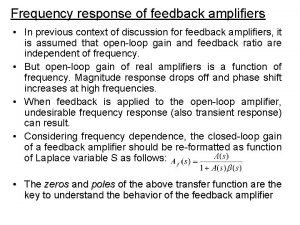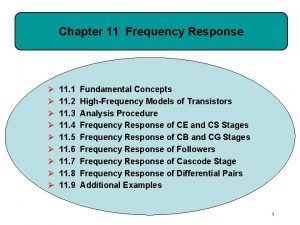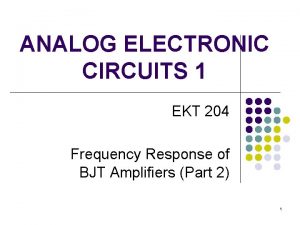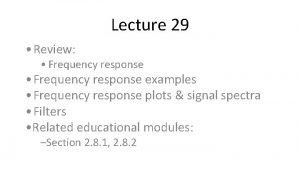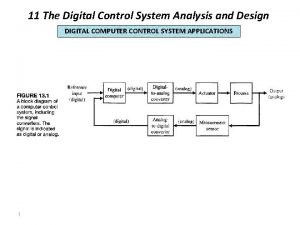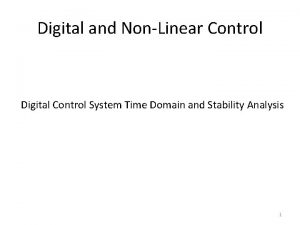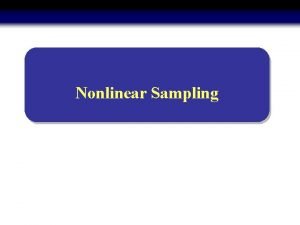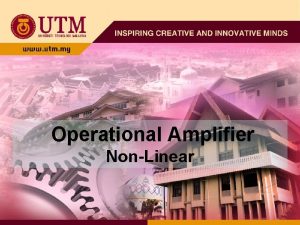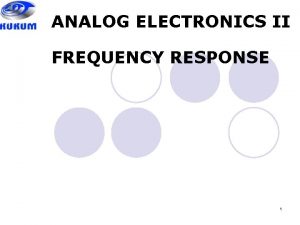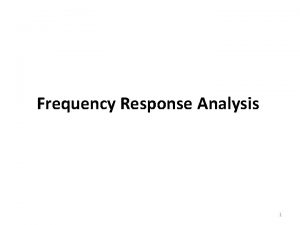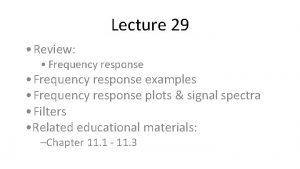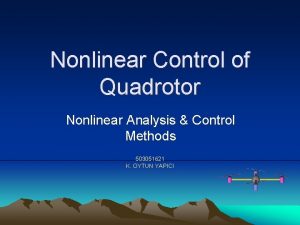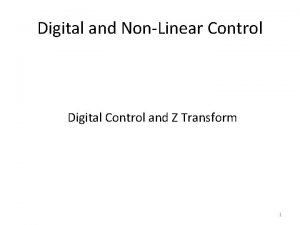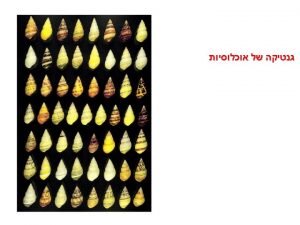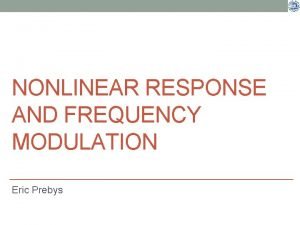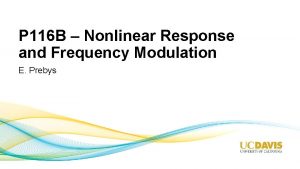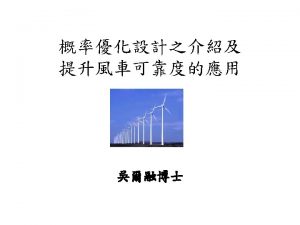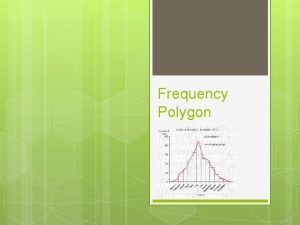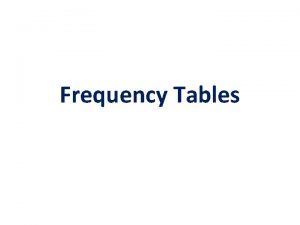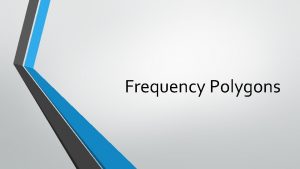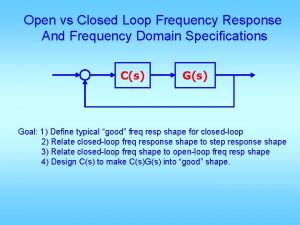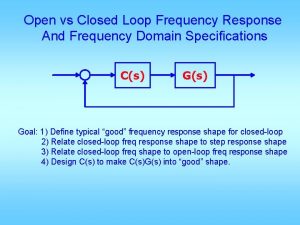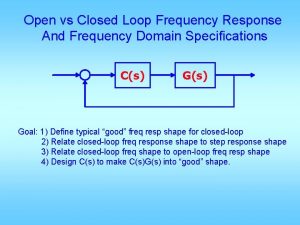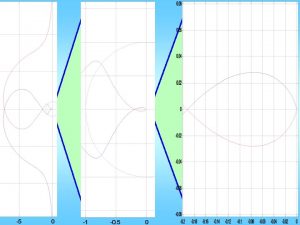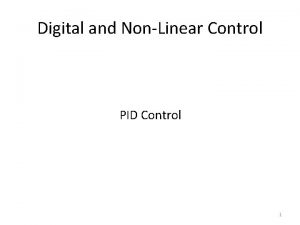Digital and NonLinear Control Digital System Frequency Response




























- Slides: 28

Digital and Non-Linear Control Digital System Frequency Response and Modeling 1

Lecture Outline • Sampling Theorem • Frequency Response • ADC Model • DAC Model • Combined Models 2

Sampling Theorem • Sampling is necessary for the processing of analog data using digital elements. • Successful digital data processing requires that the samples reflect the nature of the analog signal and that analog signals be recoverable from a sequence of samples. 3

Sampling Theorem • Following figure shows two distinct waveforms with identical samples. • Obviously, faster sampling of the two waveforms would produce distinguishable sequences. 4

Sampling Theorem • 5

Selection of Sampling Frequency • 6

Frequency Response • 7

Example 1 • 8

Digital Control System Modeling • A common configuration of digital control system is shown in following figure. 9

ADC Model • Assume that – ADC outputs are exactly equal in magnitude to their inputs (i. e. , quantization errors are negligible) – The ADC yields a digital output instantaneously – Sampling is perfectly uniform (i. e. , occur at a fixed rate) • The ADC can be modeled as an ideal sampler with sampling period T. T u*(t) u(t) 0 t 10

Sampling Process T u(t) u*(t) δT(t) × 0 Modulation signal t = 0 modulating pulse(carrier) t t 0 modulated wave

DAC Model • Assume that – DAC outputs are exactly equal in magnitude to their inputs. – The DAC yields an analog output instantaneously. – DAC outputs are constant over each sampling period (ZOH). u(k) u(t) uh(t) • The input-output relationship of the DAC is given by 12

DAC Model • Unit impulse response of ZOH 13

DAC Model • As shown in figure the impulse response is a unit pulse of width T. • A pulse can be represented as a positive step at time zero followed by a negative step at time T. • Using the Laplace transform of a unit step and the time delay theorem for Laplace transforms, 14

DAC Model • Thus, the transfer function of the ZOH is 15

DAC, Analog Subsystem, and ADC Combination Transfer Function • The cascade of a DAC, analog subsystem, and ADC is shown in following figure. The time difference between the negative step and positive step is T. 16

DAC and Analog Subsystem • Using the DAC model, and assuming that the transfer function of the analog subsystem is G(s), the transfer function of the DAC and analog subsystem cascade is 17

DAC and Analog Subsystem • The corresponding impulse response is • The impulse response is the analog system step response minus a second step response delayed by one sampling period. 18

DAC and Analog Subsystem 19

DAC and Analog Subsystem • 20

DAC, Analog Subsystem, and ADC Combination Transfer Function • The analog response is sampled to give the sampled impulse response (ADC part) • By z-transform, we can obtain the z-transfer function of the DAC (zero-order hold), analog subsystem, and ADC (ideal sampler) cascade. 21

DAC, Analog Subsystem, and ADC Combination Transfer Function • Z-Transform is given as • The * in above equation is to emphasize that sampling of a time function is necessary before z-transformation. • Having made this point, the equation can be rewritten more conveniently as 22

Example 2 • Find GZAS(z) for the transfer function of the system given as Solution • Rewrite transfer function in standard form 23

Example 2 • 24

Example 2 • Using the z-transform table, the desired z-domain transfer function is 25

Example 3 • Find GZAS(z) for the transfer function of the system given as Solution • Rewrite transfer function in standard form 26

Example 3 • 27

Example 3 • The desired z-domain transfer function can be obtained as 28
 Linear pipeline processors
Linear pipeline processors Steady state response example
Steady state response example High frequency model of bjt
High frequency model of bjt Frequency response methods
Frequency response methods Natural and forced response
Natural and forced response Natural response and forced response example
Natural response and forced response example Primary immune response and secondary immune response
Primary immune response and secondary immune response Standard test signals in control system are
Standard test signals in control system are What is dynamic response in control system
What is dynamic response in control system What is a conditional relative frequency
What is a conditional relative frequency Expected relative frequency
Expected relative frequency Average of sine wave
Average of sine wave Vmax = aw
Vmax = aw Frequency vs relative frequency
Frequency vs relative frequency What is a marginal frequency
What is a marginal frequency Conditional frequencies
Conditional frequencies Miller effect
Miller effect Multistage amplifier applications
Multistage amplifier applications Circuit theory 2
Circuit theory 2 Frequency response cbe
Frequency response cbe Frequency response curve of an amplifier
Frequency response curve of an amplifier High frequency transistor amplifier
High frequency transistor amplifier Frequency response of feedback amplifier
Frequency response of feedback amplifier Source follower frequency response
Source follower frequency response Frequency response cbe
Frequency response cbe Difference between pulse doppler radar and mti radar
Difference between pulse doppler radar and mti radar Magnitude and phase response
Magnitude and phase response System analysis
System analysis Introduction to analog and digital control systems
Introduction to analog and digital control systems

